Designers create an infinite set of unlike each other collections of facing materials - ceramic tiles, porcelain stoneware and mosaic.
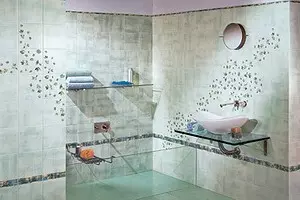
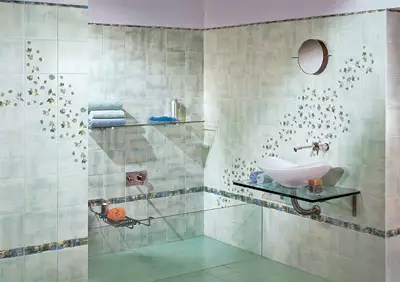
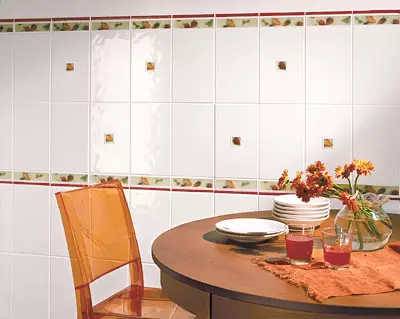
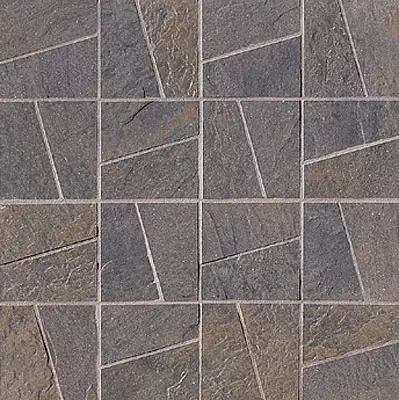
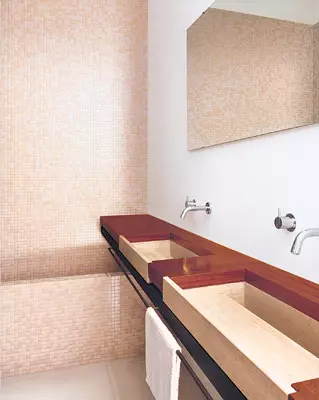
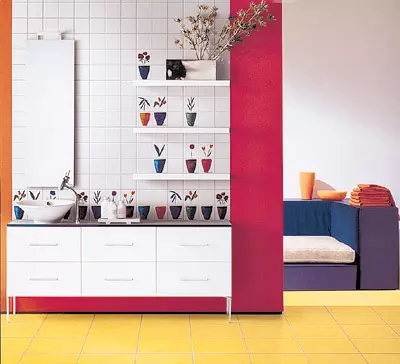
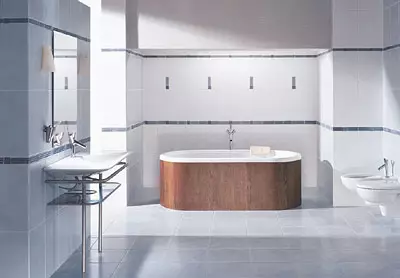
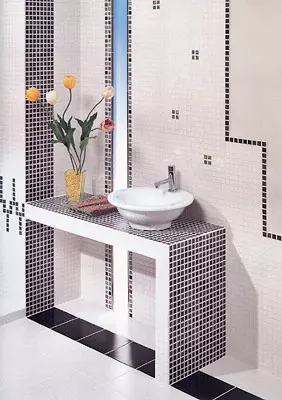
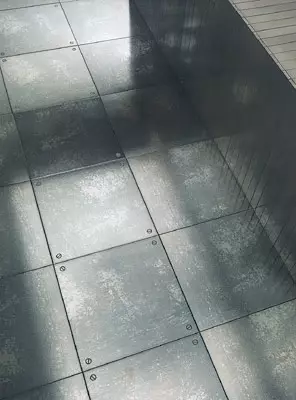
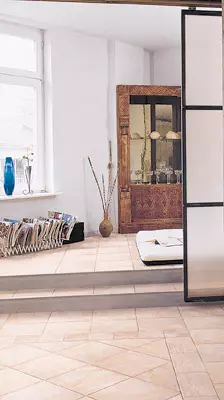
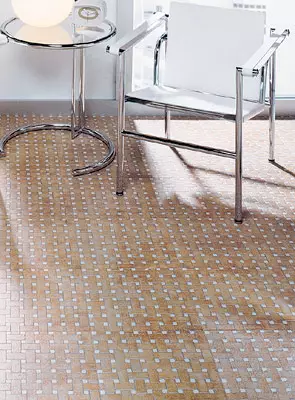
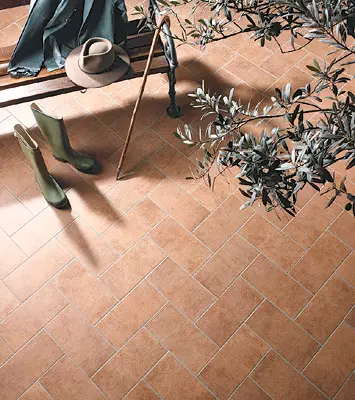
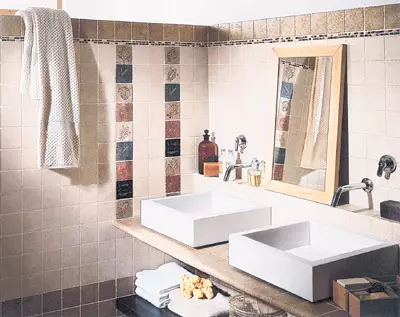
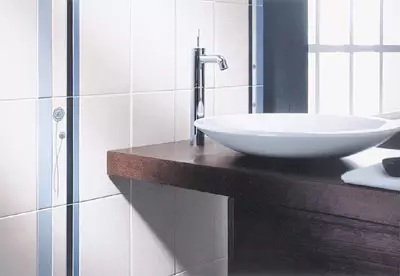
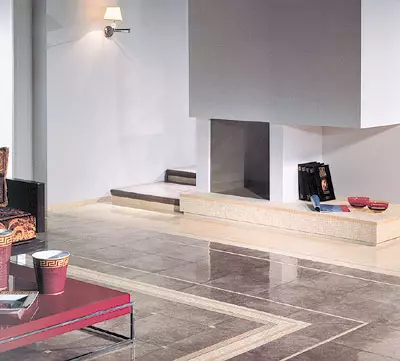
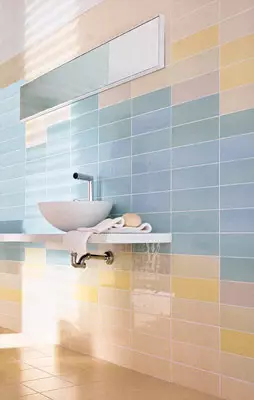
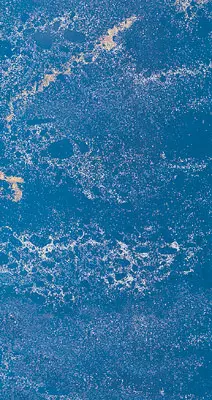
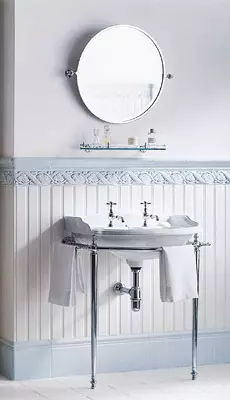
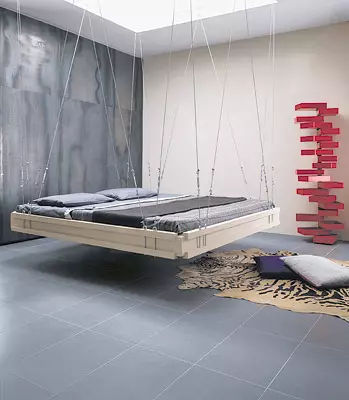
Having at its disposal only five main "instruments" - drawing, color, size, texture and formulas are managed to create an infinite set of unlike each other collections of facing materials, ceramic tiles, porcelain stoneware and mosaic.
We have repeatedly wrote about ceramic tiles, a ceramic and mosaic. Only for the last 2003, each of these materials was devoted to a separate review (
"The newest legends on ceramic tiles",
"Little yes delete",
"Granite porcelain"). Today we will not stop on the technical characteristics of their production, the principles of laying and issues of operation. Let's talk about design.
The legislators of the "ceramic" fashion is considered to be Italians. That is why the Cersaie exhibition in Bologna became a central event in the field of facing materials industry. The last, 21st in the account was held from September 30 to October 5, 2003. Novelties shown on the forum appeared in Russia only at the beginning of the coming year. The second place after the Italians in the number of products produced is occupied by the Spaniards. Assistant, no less significant can be considered the exhibition Cevisama (Chevisama), which has been recently, from March 2 to March 6, in Valencia. The innovations of this salon also have to conquer the Russian market.
The late appearance of fashionable series in Russia is primarily due to the fact that after the public display at the exhibition it takes some time before the factory launches the collection into mass production. European dealers are still at the exhibition sign contracts for the supply of small batches of the latest new products. Of course, there is a certain risk share: it is known that the collections that have not saved the attention of the public, "remove from the distance", not even time to put them on the flow. The Russian importers are very careful and first put samples, working under the order. If steady demand is formed on the tile, then they are solved to bring several primary colors in 1-2 formats.
Of course, to venture for the purchase of products not proven by the purchasing products, you need to have a healthy adventurism. Why not? After all, then you become the owner of something completely unique! Well, let the trendy tile "endarled" today and will pass for a few more years before it matters again to start a grandiose act called "Repair"! But now the interior will correspond to the modern level of world design.
Ceramic tile
How is the fashion forces on the tile? Where does the idea come from that this year will be the demand for such a color and such decorators? According to the observation of specialists there is a certain relationship between the cult of clothes in Italy and ... the production of ceramic tiles. Its drawing, color, texture, in some way variation on the theme of trendy trends in tissues and clothing, though late for three to four years. We tried to outline a few trends of this season.Large format. Already not so popular in Russia monochrome squares 1515cm. If there is a square, then, at least 2020 or 2525cm, and better rectangles - 1030, 2030, 2550, 3060cm, etc. Monochrome or with a "floating" color, where close colors smoothly flow one to another; With several contrasting shades having a clear, separating the border, or with a pattern. True, the floor tile is traditionally square, the most chassis today is the size of the modules - 33.333.3 cm. New collections of large-format ceramics annually appear in the assortment of most leading manufacturers. The benefit that all the technical difficulties of manufacturing such products have been overcome over the past five years.
Vertical or horizontal? It is believed that the vertical lines of a person perceives both movement and associate them with its own vertical position. The horizontal eye on the emotional level of the eye "decrypts" as the most attainable calm and peace, for him it is a kind of measured, descriptive "narration".
Over the past few years, a steady opinion is formed, rectangular tile must be stacked vertically. Apotheosis of this idea is a Boiserie collection (30.75С = / m2) from Ceramiche Grazia (Italy). It consists of 2080 cm tiles, each of which, in turn, is divided into another three vertical stripes. Bar-relief herbal ornaments serve as the completion of ceramic "columns" and eliminate the horizontal laying option. Style is a modern classic with all the necessary attributes of the classics traditional, but without excessive overload with details.
However, not everything is so unequivocal. The format of 1030cm received widespread, and not he alone, very actively contributes to the assertion of the trend of horizontal laying. Even decorators, until recently, running on the "short" (smaller) side of the rectangle, now make more often on the "long". The same Ceramiche Grazia factory in the Modulo collection (36.9 C = / m2) offers a compromise solution to the problem: a background tile of 2030cm of white or beige color and narrow inserts of the width of only 2.3 or 4.8cm and a length of 30cm (blue, green, Orange, yellow, red-brown). With off-born in the height of the bathroom, this tile laid vertically, visually changes the size of the room, will spread the space. In the kitchen, modulo can be mounted and horizontally - in this case, narrow color inserts create a light "edge" for walls.
Minimalist style. Suppliers in one voice assure that the most popular style in ceramics is minimalism, geometrically strict and concise. Naxos factory responded on expectations of customers of the new NET line (New Emotional Tiles). Tiles of fashionable format 11.1 33.3cm (colors, white, beige, blue, green, brown) are stacked vertically, horizontally or faded. Size of floor modules - 33.333.3cm. Jamajka series from Opoczno factory (Poland, 3045cm) is classic minimalism: white tile and dark stripes.
Photorealistic images. While this is a space for the embodiment of a floristic topic. Preference is given to bright, saturated and living color. The experience of the Italian factories Ariana, Viva, Ceramica Bardelli, Impronta is already known. The new Codice collection from Atlas Concorde (17c = / m2) is the continuation of experiments with the maximum "similarity". Narcissus dismissed on decorative inserts! The image is applied to a thin glass base, on top of which another one, a thick layer of glass - due to this picture acquires depth, the effect of three-dimensionality appears.
Relief tile. As is known, tactile communication is one of the ways of perception of the world. And psychologists have long proved that it is no less effective than audiovisual. The TActilis collection from Ceramica d'Imola (from 23.7C = / m2, size 2550cm) arose after a thorough study of the history of the arts of the twentieth century, namely the famous futuristic evenings of touch. Gathering together, people entertained recognizing various surfaces exclusively to the touch. Roughness, irregularities and bends give the opportunity and ceramics to "talk" with their owner. You can be deceptive to take tactilis with disgraceful eyes even for soft fabric. Another option is a ceramic tile for the Trendy series from Ariana (24c = / m2), resembling the texture "crumpled paper" (wall modules - 2540cm, borders - 540, 525 and 325 cm).
Game with color. Color can be bright and "ringing". As-pastel, muted, soft. Coloristic combinations - contrasting, exciting, active. As, for example, white and black in the Bathroom Collections of Eterna from the Spanish company Metropol (21.64С = / m2) or bright squares on the floor and at the bottom of the wall cladding in Omeya from Tau (Spain, about 20c = / m2). The highlight of the latter series - square inserts, as if chosen on small pieces. There are very consonant and thin combinations. Becolour from EDILCUOGHI (37.8C = / m2) allows you to play with color harmony. The collection consists of a tiles of 17 different shades, two formats (1030, 2020cm) and three types of surface. For those who do not want to spend time on creative experiments, the manufacturer offers 40 typical and very original laying schemes.
Imitation of materials. An unexpected decision was suggested by the Russian group "Kerama". Products from the "Varan" collection (from 300 rubles / m2) have a glossy surface that imitating the texture of the skin reptile. The background tile of 2030cm is represented in black and white variants, metallized decorative elements have a mirror surface. Format borders - 420 and 620cm. Madrigal line from Peronda (Spain, 23c = / m2) - an exact copy of the light beige travertine. Friezes with inserts of artificial melts of cold green and bluish shades resemble the streams of live water, breaking through the stone sol. New Age from Ceramiche Ricchetti (Italy, 23.9c = / m2) is a ceramic pseudo-beam, where the drawing of each tile of 2020cm is 64 small squares.
New decors. The LUX collection from the Spanish Peronda factory (24c = / m2) includes the traditional tile, imitating carrarian marble with gray-coated veins. But as soon as friezes are added with the image of orchids, it is transformed beyond recognition. Relief flowers and stems, overflowing, protrude on the surface of the facing, creating an additional volume. Remember, even recently, the whole world was passionate about the removal of new varieties of orchids, capable of blossoming not only in greenhouse conditions, but also in ordinary, indoor. And now the Spanish masters perpetuated the blooming "queen" in ceramics. What is it? Moting meadow flowers or invasion of insects? In the products of the Cromatica collection from Edilcuoghi (26.2С = / m2), the asymmetry of the design of the pattern and the gentle green tone of the main background are especially attractive.
Decors with fruit and berry is a sure sign that the ceramic tiles are designed for laying in the kitchen. The "strawberry" inserts in Cristalli (17.5 ° C = / M2) of the Italian company IRIS look extremely appetizing. Wall modules have 2033.3 cm, borders - 520 and 1.520 cm.
Ceramographic
Cerambulanite- Comparatively young material, and the technique of its manufacture is constantly being improved. Therefore, manufacturers do not miss the chance to attract the attention of buyers by a message about their achievements. For example, the IRIS factory used a new technology when creating a collection of smalleted porcelain stoneware Naturgress (from 25c = / m2). If earlier the crushing step was carried out by a wet method, with the addition of water, then in this case the manufacturer applied dry, which significantly increased the strength of the material. Instead of the usual application of glaze rollers, the factory took advantage of the steam method: the heated glaze is sprayed through the nozzles. This method provides smooth transitions of color shades and allows you to achieve maximum similarity in the appearance of ceramic granite and natural stone. Retered (or calibrated) material. "Revitalis" is a term, not yet officially recorded in Russian dictionaries and is a direct tracker from Italian. This is the process of mechanical cutting of side edges at finished tiles to give them all the same size in each format. What for? The tile with perfectly smooth edges can be laid with a minimum of 1mm, creating "whole" facing coatings on the surfaces. Almost all the porcelain stonewares today is retreed today.
Reliable text path. Now no one will not surprise tiles of the type "salt-pepper" or "marble" surfaces. Factories prefer to produce more expensive collections (recently the average retail price for the material has grown noticeably) with the original pattern: imitating wood, cement, various natural stones, vulcanic rocks, granite.
Fashionable nominate collection of Metal Line Italian IRIS Factory, a decisive difficult task: try to reproduce the essence of the metal, its character, in harmoniously enter it into the interior of a residential building. Metal Line is a tile of 66.633.3cm (46c = / m2), 45.745.7 cm (44 C = / m2) and 2020cm (25-32c = / m2), similar to iron, steel or titanium. Interesting FUSION's textures (with drops on the surface) and Steel Screw (with bolts that are usually fixed by metal sheets).
Is it too definitely separating the floors in the house with tiled cement? For interiors in the style of High-tech, probably there is nothing tempting. Cementi Collection from Mirage Granito Ceramica (Italy, from 50c = / m2) includes models of five colors: Silver (light gray), dimgray (gray), leather (gray brown), OIL (dark gray) and Ivory (beige) . Products are produced both in fashionable formats 560 and 1060cm and in more traditional - 4040, 4060, 60 60 and, finally, 60120cm, the thickness of the tiles is 10mm.
Ki from Cerim (Italy, 35, 9 C = / m2) is already familiar to us, but not yet lost its relevance a part-book "tree". Tiles have the shape of a square, wide and narrow rectangles and to the touch are similar to the uneven cut of the tree.
The imitation of the ancient Italian cotton-unused porous tile handmade is demonstrated by the LE Strade Del Vino series ("Wines Streets") from RHS. The material is presented in two formats (3434 and 1734cm) and in four color versions that reproduce well-known Italian wines in their names (from here and the name collection): Brunello Rosso (Red), Merlot Rosato (Pink), Amarone Dorato (Golden) and Thurgau Paglierino (light yellow).
The Spanish factory Zirconio has released two interesting collections of the collection - andujar with a mosaic pattern and lenox, recreation of a slate surface.
Cutting tiles. In the manufacture of porcelain, square or rectangular products are obtained. But the subsequent cutting of ready-made tiles allows you to create even complex curvilinear forms. This is achieved through the use of WaterJet technology (hydroda). With the help of the computer, molds are formed, then a thin jet of water, directed under a pressure of 2000 atm and above, cuts the elements of the desired configuration. This technology is currently in demand by the market, many Russian dealers purchased the appropriate equipment. A very vivid impression was made of the new Wings and Flow transforming tiles from Steuler (Germany). They can be used to clamp complex curvilinear sections of the surface or creating an interesting decor with adding inserts from other materials. The Extreme Collection of Atlas Concorde (35c = / m2) is used inserts from aluminum three-color-"Electric" (with a brilliant blurred shade), "copper" and the usual aluminum. Tiles mimic various rocks. Additives of quartz crystals and mica shiny, reflecting the light on the matte surface.
Expansion of color gamut. Many manufacturers pay great attention to improving existing collections. For example, the Granitifiandre factory (Italy) added 11 new drawings in the New Marmi series, New Graniti and New Stone series, seeking to reproduce not only the usual rocks, but also more exotic: blue marble (Sodalite Blue), granites of rare shades of cream, beige and brown-black (Shivakashi, Multicolor Red, Paradise) and others. The Italian company Ariostea was not limited to the expansion of the color range of Marmi lines and Pietre Naturale. Using the idea of creating mixes (sets of multi-colored tiles) popular in mosaic, the factory cuts from the slabs of large-sized small squares and produces its porcelain bands and decorative panels. What is especially interesting - the production of products serial.
Decorative inserts. Of course, the idea to form a collection of background tiles and decorative inserts-plinths, borders, frieze, not new. But every year there are more and more original options for its implementation. For example, a series of glazed policromi porcelain stoneware from Marazzi. The tiles themselves imitate the aggregate marble and have a "modest", "archaic" size - 1010cm, definitely sending us to fashion past years. Avt inserts quite correspond to the day of today: decors from natural marble, "rocky" drawings and popular in Italy "kitchen" motifs - olives, lemons, peaches (sizes of 1010, 5 20, 320 cm). Tile can be laid both on the walls and on the floor.
Mosaic
One of the most significant novelties in the world of Mosaic - Glass3 (Glass Cube), presented last year with SICIS factory. The line got its name due to the effect of the volume of the image arising from a combination of various types of Murana SICIS Smalt Sicis collections from the Iridium collections (with a pearl tint), Murano Smalto Mosaic (Matte) and Water Glass (transparent). A wide variety of source material has made it possible to create over 150 all sorts of drawings, many of which are decorative ornaments with a predominance of one pure color: blue, green, orange, yellow, red or black. Also Glass3 develops vegetable (flowers, leaves) and marine (dicker fish, shells) themes. Modules measuring 29.629.6cm are manually assembled and attached on the grid. The cost of one module - C = 216.
Another global leader in the production of mosaic - Bisazza company changes the stereotypical idea that the place for a glass mosaic is only in the bathroom and in the kitchen, and creates a series of patterns that imitate ... Ordinary wallpapers (from 75c = / m2)! POIS (Balls), Righe (Stripes), Rete (Mesh), Diagonale (diagonal) of white, pink and blue color reproduce classic motifs for wall decoration in the living room or hallway.
It seems that the idea of imitation of various surfaces will long be relevant. Bisazza designers found inspiration in spotted and striped animal skins (reptiles, zebras, giraffe, leopard) and Military-style patterns. It is such a drawing that appeared in 2004 decorative mosaic layouts (230 and 205c = / m2). Another interesting findings - borders with children's theme: animals, toys, puppies, collected from 1010mm squares (C = 27.5 per one element measuring 1616cm).
The Italian company Trend launched a new Karma series (from 160 to 360s = / m2). It is distinguished very bright, saturated colors (only 30 shades; glass is scratched on the whole thickness, on the substrate there is a white metal foil, which gives the effect of reflection) and a wide dimensional row - 22, 4 4, 24, 48, 88, 824, 12 12, 1248, 2424, 1530 and 4896cm. Trend tries to recreate the type of mosaic used in the manufacture of stained glass in the cathedrals.
Over the past year, products at once, three factories have appeared on the market, who had not previously supplied their goods to Russia, - Sade glass mosaic (China) and ceramic Starvenus and CE.SI (Italy). Sade products are not only squares 22 and 25cm (only 29 colors; price-c = 6 per module 31.831.8 cm) and mixed copies, but also large glass tiles 3030cm (77.2С = / m2).
Starvenus offers a mosaic (2.52.5 and 55cm) several series - single-color, multicolor, imitating metal, with manual painting (from 40 to 180c = / m2). In addition, the factory produces expensive exclusive Madreperla and Metalli Preziosi collections with natural pearl (550c = / m2) and gold (850c = / m2) spraying.
Finally, CE.Si implements the idea of pure, saturated, emphasized decorative color. Tiles 2.52.5, 55 and 1010cm are combined into modules with a size of 3030cm and a thickness of 7mm, this allows combining a mosaic with the ceramics of the same manufacturer. CE.SI products (50c = / m2) has water absorption about 0.1% and according to the technical characteristics refers to the same group as porcelain stoneware.
The editors expresses grateful to the firms "Basalt Ceramics", "Bars", "Granitogres", "Kerama", "Ceramics", "Credit Ceramics", "Lira Ceramics", "Mariner", "Mirage-ceramics", "Mosaic", " Premier Ceramics, "Salon Italika", "Skvirel", "Old Man Hottabych", "Studio Keemika", "Fintorg", "Chic", representative offices of the Atlas Concorde, Bisazza and Tau for help in preparing the material.
